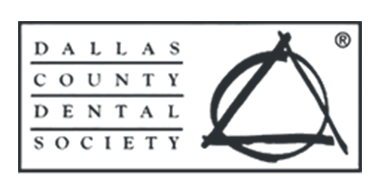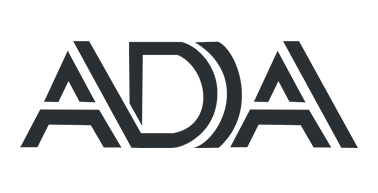Botox for Migraines, Facial Pain, Teeth Clenching and Grinding

Botox is well known as a cosmetic treatment to smooth out facial wrinkles. But it’s also used to treat medical conditions. In fact, Botox has a long history of therapeutic applications and was originally developed to treat eye problems.
In recent years, the use of Botox in dentistry has expanded to treat chronic headaches, facial and jaw pain, and teeth clenching and grinding. In this post, Irving dentist Dental Concepts & Orthodontics explains how Botox does a lot more than just enhance smiles.
Botox to Treat Medical Conditions
Botox is produced from a toxin released by the bacterium Clostridium botulinum. This is the same substance that causes botulism food-poisoning. However, doctors use diluted purified botulinum in small doses that are safe. Botox injections temporarily paralyze or weaken muscles by blocking nerves. This can have medical applications as well as aesthetic benefits at the dental office. Botox treatment by dentists helps with the management of migraines and muscle-related diseases such as jaw disorders, facial neuralgia, and teeth clenching and grinding.
Botox for Migraines
Migraine is a neurological condition that causes severe, recurring and often debilitating headaches, along with other distressing symptoms such as nausea. It affects children and teens as well as adults. Some patients get migraine from time to time (episodic migraine). With others, the condition is long-lasting (chronic migraine). Migraine attacks can last for hours or days, with pain so bad it restricts daily activities.
It remains unclear what causes migraine headaches, and there’s no cure yet, but medications like Botox can ease the symptoms. Botox was approved by the Food and Drug Administration (FDA) in 2010 as a treatment for adults with chronic migraine. It was developed as a migraine treatment after patients realized the condition improved if they had cosmetic Botox injections.
For migraine treatment, Botox is injected into multiple areas of the head and neck every 12 weeks. Some patients are able to discontinue injections after a time without frequent migraines returning. Others need regular treatments to keep the condition under control. In a study of adults with chronic migraine, Botox was found to reduce the frequency of headaches, with more pain-free days each month. Patients also reported fewer days off work. Medics think Botox works for migraines by blocking the pathway of chemicals called neurotransmitters that carry pain signals from the brain.
Botox for Facial Pain
Various chronic pain syndromes fall under the broad diagnosis of facial pain, including temporomandibular joint disorder and trigeminal neuralgia.
Temporomandibular Joint Disorders
Temporomandibular joint disorders are a group of more than 30 conditions. The temporomandibular joint (TMJ) has a lot of work to do in ensuring jaw function. It’s one of the most used joints in the body, relying on several muscles, ligaments and bones. A temporomandibular joint disorder (TMJD) occurs when the jaw joints and muscles become overburdened and stop functioning properly.
TMJ disorder can be caused by multiple factors, including teeth grinding and clenching. It’s the second leading cause of facial pain after dental problems such as toothache. It can result in constant or intermittent pain over many years and may flare up during times of stress. Botox eases TMJD by reducing excessive jaw muscle contractions. Research suggests Botox can improve TMJD symptoms in 90 percent of cases. Botox is typically seen as a complementary therapy for TMJD, alongside treatments such as night guards to combat teeth clenching and grinding. However, in some cases Botox treatment may be all that’s needed.
Trigeminal Neuralgia
Sharp, shooting pains in the face, jaw, gums or teeth can be the result of trigeminal neuralgia (TN). The condition is rare but affects more women than men, particularly over-50s. Most people with TN have trigger points originating in the facial muscles. Botox paralyzes these trigger-point muscles, which blocks pain signals coming from the brain.
Botox for Teeth Clenching and Grinding
The medical term for habitual teeth clenching and grinding is bruxism. The condition occurs most often at night as you sleep, and causes headaches, dental damage, and jaw disorders. The cause of bruxism is still something of a mystery, but it’s believed to be the result of a combination of genetic, psychological, and physical factors.
Teeth grinding and clenching can either trigger a temporomandibular joint disorder or make an existing jaw problem worse. Botox is commonly used to treat bruxism, and it can begin to alleviate symptoms within five to ten days. Results may last three to six months before further treatment is needed.
Although Botox cannot provide a complete cure for bruxism, it has been proven to lessen the dental damage and pain associated with the condition. The botulinum is injected directly into the masseter muscle near the temporomandibular joint. This weakens the muscle just enough to lessen teeth grinding and clenching and wear and tear on teeth. However, the main function of the masseter – enabling you to chew – remains unaffected.
Are Botox Injections Painful?
Botox treatment is minimally invasive, and the needles used are extremely fine and small. Some patients experience no pain. The only discomfort you may get during the procedure is brief – a slight stinging or pinching sensation when the needle is injected. If this is a concern, a numbing cream can be applied. Botox injections require no lengthy preparation and involve little if any downtime afterward. The procedure typically takes just 10 to 30 minutes, depending on the number of injections needed.
Does Botox Treatment Have Side Effects?
Botox treatment by a licensed health care provider is safe and effective. The botulinum remains within the injection area. It doesn’t circulate throughout the body in your blood. This means systemic side effects from Botox are rare. Other possible side effects of Botox treatment include bruising, swelling, or inflammation around the injection site, flu-like symptoms, and dry or watery eyes.
Need Some Help?
If you’re struggling with chronic migraine, facial or jaw pain, or teeth clenching and grinding, your Irving dentist Dental Concepts can help. Contact us to request a consultation.






Please login to publish a comment.
Comments (0)